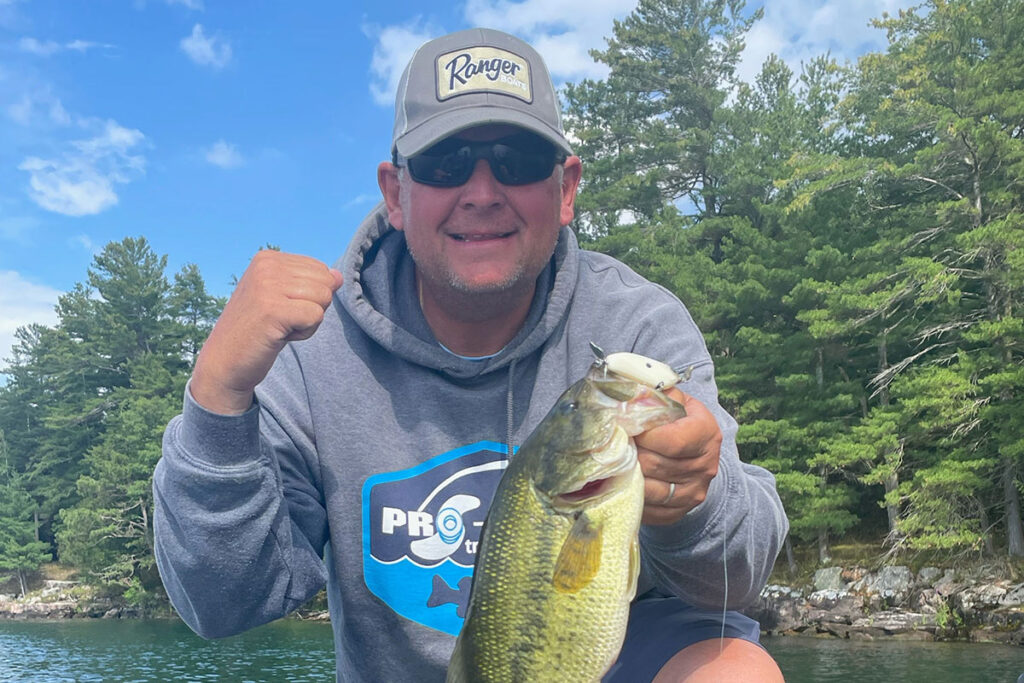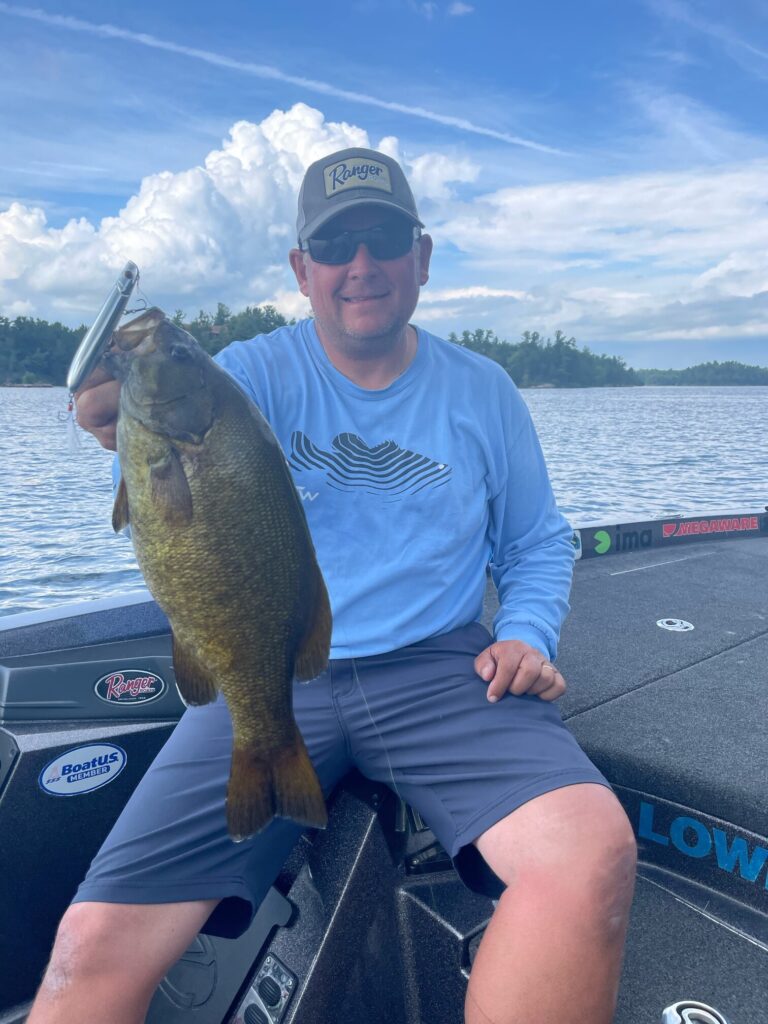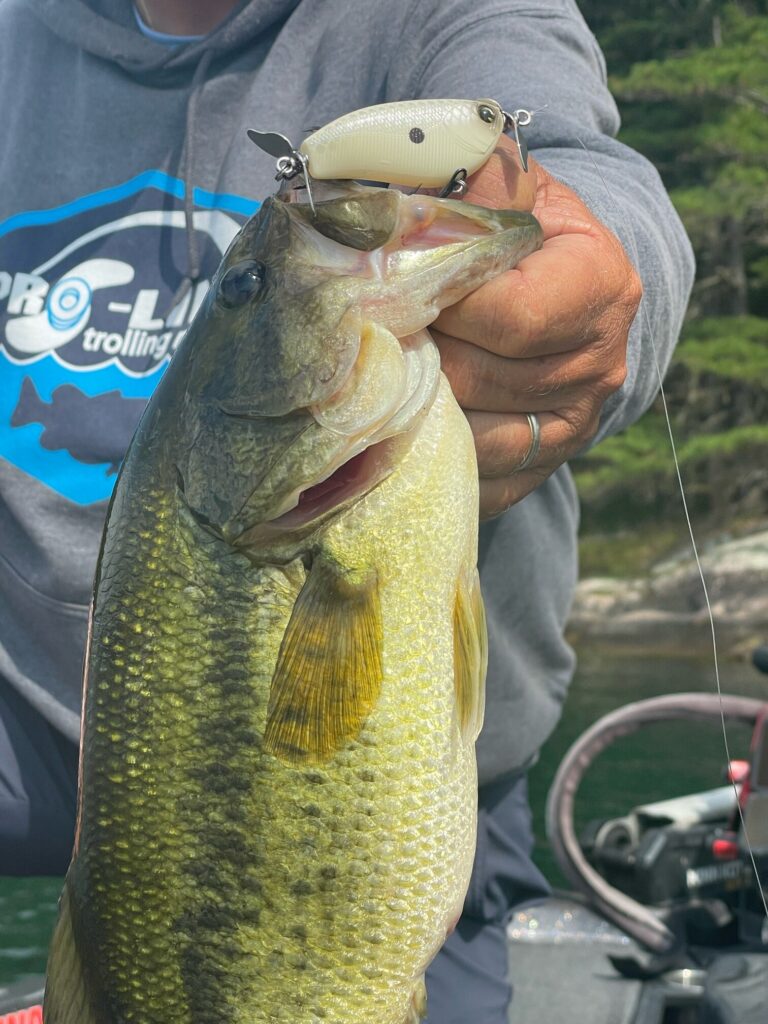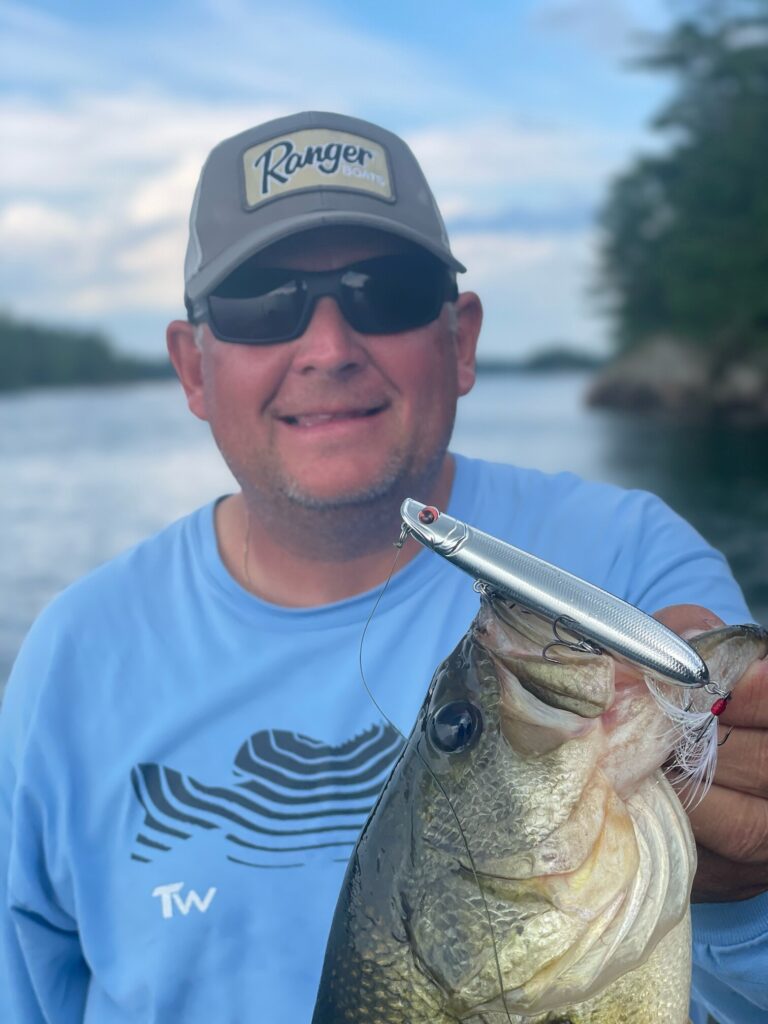
Topwater fishing can be very exciting and there is no better time to get in on the action than right now. Continuing through the heat of summer and into the fall, the surface bite has the potential to be some of the best fishing of the entire year. Here is how Professional Angler Kurt Dove approaches this magical window of opportunity.
Patterning the Fish
“Consistent top water fishing is all about water temperature,” explained the Del Rio Texas Pro. “When the water temps hit the mid 70’s early in the summer, topwater tends to be a very viable pattern. As summer moves on and water temps continue to increase, prime time is typically early in the morning and late in the evening unless low light conditions prevail throughout the day. While I do think the best top water bites occur during low light conditions, this could occur during mid-morning or late afternoon with the presence of cloud cover. Low light creates a high percentage environment but you can certainly catch top water fish in bright sunshine with the dictating factors being the presence of shad near the surface or some form of cover for the bass to use as ambush points.”
Dove likes to start out summer mornings with topwater baits, targeting: rip rap, the backs of pockets, grass flats, and points. This strategy allows him to cover water fast and to find active feeding fish. “This time of year the shad are moving around a lot,” he explained. “Shad are constantly migrating, and they will be around cover at times but will also move to open water environments as well. The most consistent pattern through mid summer is the bluegill spawn, although this begins to taper off by mid-August.
When the sun gets higher in the sky, Dove will slow down from his frantic pace of the morning and shift to a more bait or cover specific mode. “If there is a lot of bait on a point or over deep-water creek channels or even main lake channels, I’ll continue to work it over and over, trying to elevate the fish to eat my topwater,” he revealed. “If I’m on a bluegill pattern, I’ll run the bed’s that I have located, or I’ll just put my trolling motor on high and go looking. And when I find a bed, I generally won’t fish it right away, I’ll go by it almost like a spawning bass and I’ll come back and reposition the boat so that I can strategically target the bed more effectively. Shallow cover also plays an important role in my approach. Stuff like logs, laydowns, or submerged vegetation will hold bass during most of the summer.”
As the seasons transition from late summer to early fall, typically in August and into September, the bass have a tendency to become finicky. The activity level of the fish change as the baitfish begin to move up in the water column or begin to migrate into the back of the creeks. To counter this shift in behavior, Dove relies on small to mid-size topwater baits. It is common to find schooling bass that are actively chasing the smaller baitfish that spawned earlier in the summer. An accurate presentation is critical to capitalize on these fish. As the weather begins to cool, Dove likes to work the backs of creeks, with the emphasis on covering water quickly. Topwater is a great way to get quality bass to react but it requires dedication and focus to catch a quality tournament limit running this pattern.

Bait and Tackle Considerations
Selecting the right bait is an important component to successful topwater action. “IMA has a number of great bait options that provide some different looks,” said Dove. When searching for fish and covering water, he relies on a walking style bait like the Little Stik or the Grande Skimmer. These baits can be worked with a fast cadence to produce a very erratic action. If he wants to slow down or needs a more subtle presentation, he will down size to a Baby Stik or a Skimmer.

“The Helips and the Finesse Popper are great tools for targeting bluegill beds and cover oriented fish,” said Dove. “The reason these baits are so effective is because they can be worked slowly within the target zone for a long time. You can pop the Finesse Popper and just let it sit. Even though you’re not moving the bait, the undulation from the rear feather trailer hook will continue to make action. A lot of times working the bait really slowly will annoy the fish into striking. The Helips is the same way. The noise from the props is a strong trigger. It’s just small rips, maybe a couple of inches, not big rips like a foot. Just real slow twitches. Those are the keys to effectively working these two baits.”

Bait color is also an important consideration. “When fishing blue back herring lakes, a chrome Little Stik or Grande Skimmer is hard to beat,” said Dove. “In fact, they are so popular that they can be hard to find at times. A bluegill or perch pattern Helips or Finesse Popper, is my choice when targeting bluegill beds or cover oriented fish. I use real ghost shad a lot in clear water but if I was limited to just one color it would be bone. Smallmouth just love a bone colored bait. Last year on the first day of the Bassmaster Northern Open on Lake Oneida, I was fishing a bone Finesse Popper in the holes of a grass line and I caught them real good.”
Dove prefers to change out the stock treble hooks on all of his hard baits with the super sticky and very stealth Hayabusa TBL 930 Treble NRB Hooks.
Finally, Dove likes to fish topwater baits with a 7′ Powell 703 Casting Rod and a 7:1:1 gear ratio Shimano reel spooled with 40lb straight braid for use with walking baits. When fishing a Helips or a Finesse Popper, he elects to use 15 monofilament with the caveat that if casting distance is important he will instead opt to use 40lb braid mainline with a 20lb mono leader.


